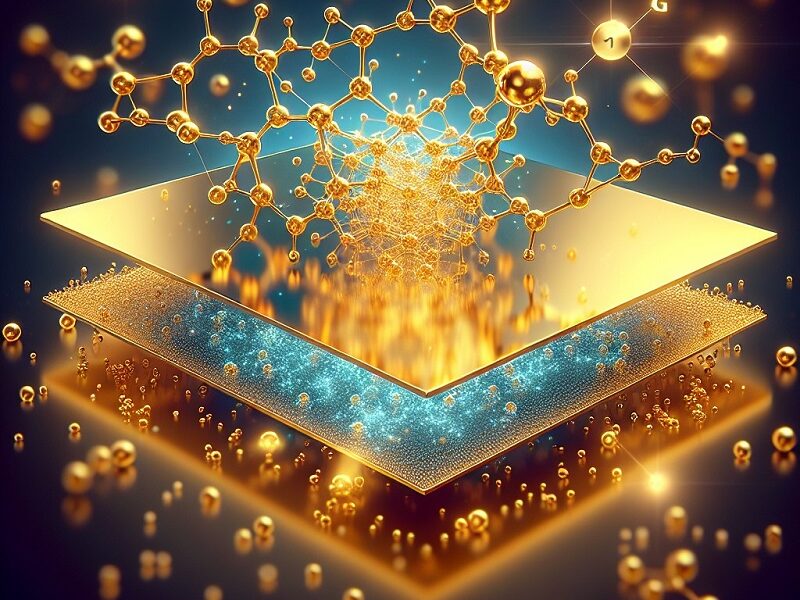Scientists have done it again – they have created a thinnest sheet of gold. A breakthrough was reported in the April 16th issue of Nature Synthesis. It could majorly impact electronics and chemical reactions.
Goldene is a material that is only one atom thick. It is similar to other two-dimensional materials, such as graphene and phosphorus. Despite its thinness, this single layer of gold could change the way we use this precious metal.
One of the most exciting possibilities is its potential use as a catalyst. Currently, gold is used in many catalytic reactions due to its unique properties. However, with goldene being just one atom thick, it could potentially be used in smaller quantities without compromising its effectiveness. This would make it a more economically viable option for various industries.
Making of the Thinnest Sheet of Gold
Creating 2-D sheets with metals like iron and gold has proven to be a challenge for scientists. These atoms tend to clump together rather than forming flat sheets like nonmetal elements do. The team at Linköping University in Sweden discovered a solution. They first created a three-dimensional material. This material is called titanium gold carbide.
The next step involved removing the material around the gold. They used a solution based on potassium for this. This process left behind only a thin layer of gold atoms, known as goldene. But as expected with such delicate structures, the sheets started curling up on themselves. To keep them flat and usable, the team added a surfactant to their etching solution.
The team is now looking to apply this same technique to create 2-D sheets of other metals like iridium and platinum. This could open up a whole new world of possibilities for these valuable materials.
Goldene might show unusual properties like other thin materials. This makes it an exciting research topic for scientists. With its potential use as a catalyst and in various other applications, the future looks bright for this newly discovered material.

Disclaimer: This blog post is based on research published in Nature Synthesis on April 16, 2024. The opinions expressed are solely those of the author and do not reflect the views of ENTECH Magazine or its affiliates.
Thanks for reading!
Check out ENTECH magazine at entechonline.com for articles by experienced professionals, innovators, and researchers.










